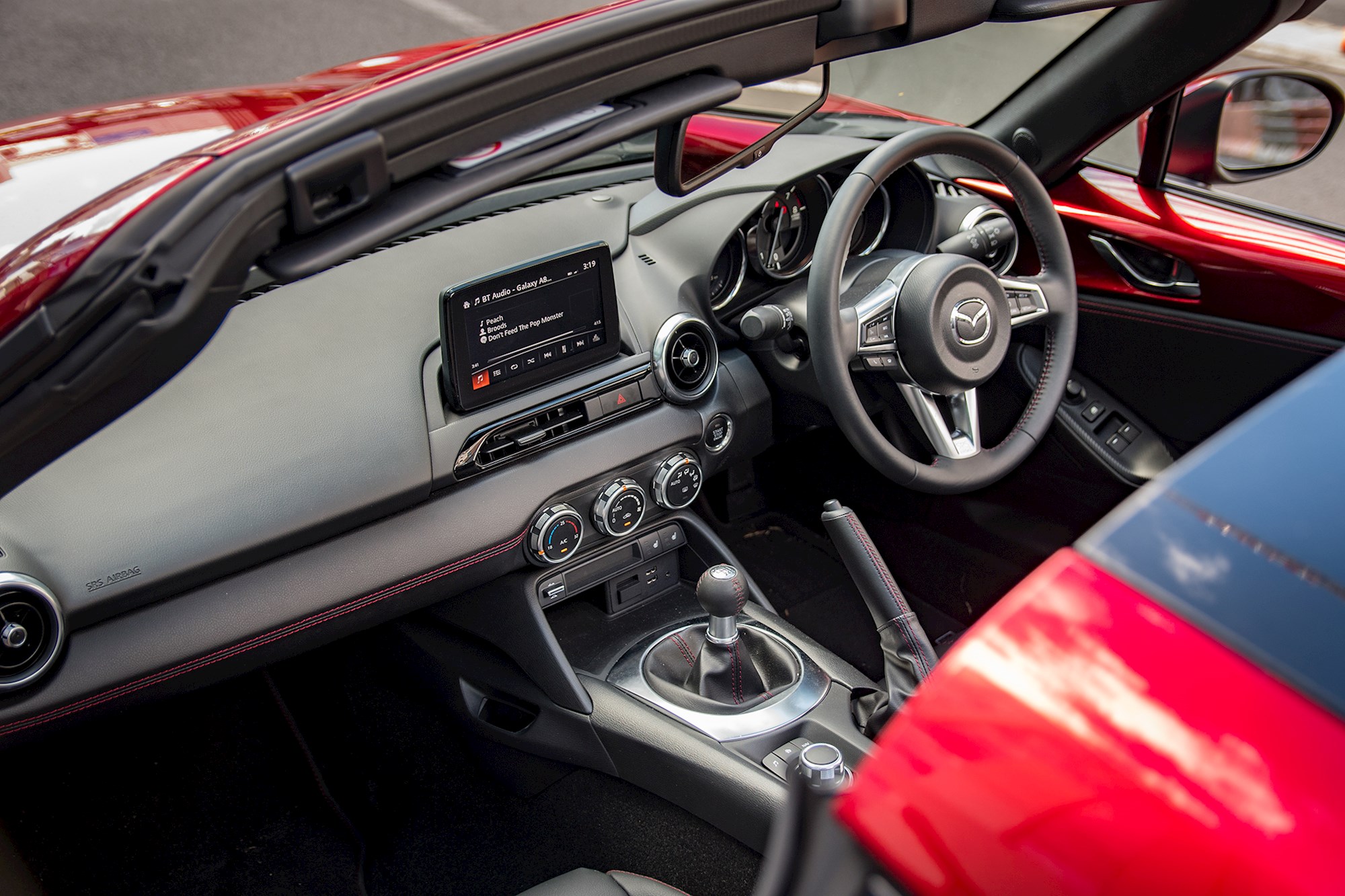Mazda's iconic sports car — the MX-5 — is set to take gain more mechanical sophistication when its next refresh lands.
Overnight Mazda announced that the next refresh of its diminuitive two-seater will gets a version of the firm's i-ELOOP 'kinetic recovery' regenerative braking system, as well as its i-stop stop-start system.
Given that regenerative braking is commonly associated with hybrids its inclusion here might seem a little odd at first. But, plenty of Mazda's internal combustion products (like the Mazda6, for example) have featured i-ELOOP over the years.

The system works by storing kinetic energy accumulated while braking and coasting in a high efficiency capacitor, which then acts as a super sub for the car's alternator for the purpose of powering the car's electrics. Mazda says that its variable voltage alternator will only run when the driver's foot is off the throttle pedal, with the capacitor kicking in as a substitute when the driver does decide to boot it.
Read more: Keeping it old-school — road testing Mazda's eternal MX-5
The net result of this is more efficiency and less delay in the MX-5's acceleration, since the alternator won't be dividing its attention between the engine and the car's on-board electrics as frequently.
The trick for Mazda to perform now is to ensure that the i-ELOOP and i-stop systems don't compromise the convertible's deft balance or or low outright weight.
Thankfully, the Japanese manufacturer has experience in defying logic around weight. As written previously, the complex hard-top roof on its RF models adds a mere 47kg over the standard Roadster soft-top. As it sits in the Mazda6, the i-ELOOP system weighs approximately 9kg.
If all of this sounds tantalising to you, be warned. The announcement was specific to the European market. Mazda have not yet confirmed the changes for the rest of the world just yet, including in New Zealand and America.
To view Mazda MX-5 vehicles listed for sale on Driven, click here




